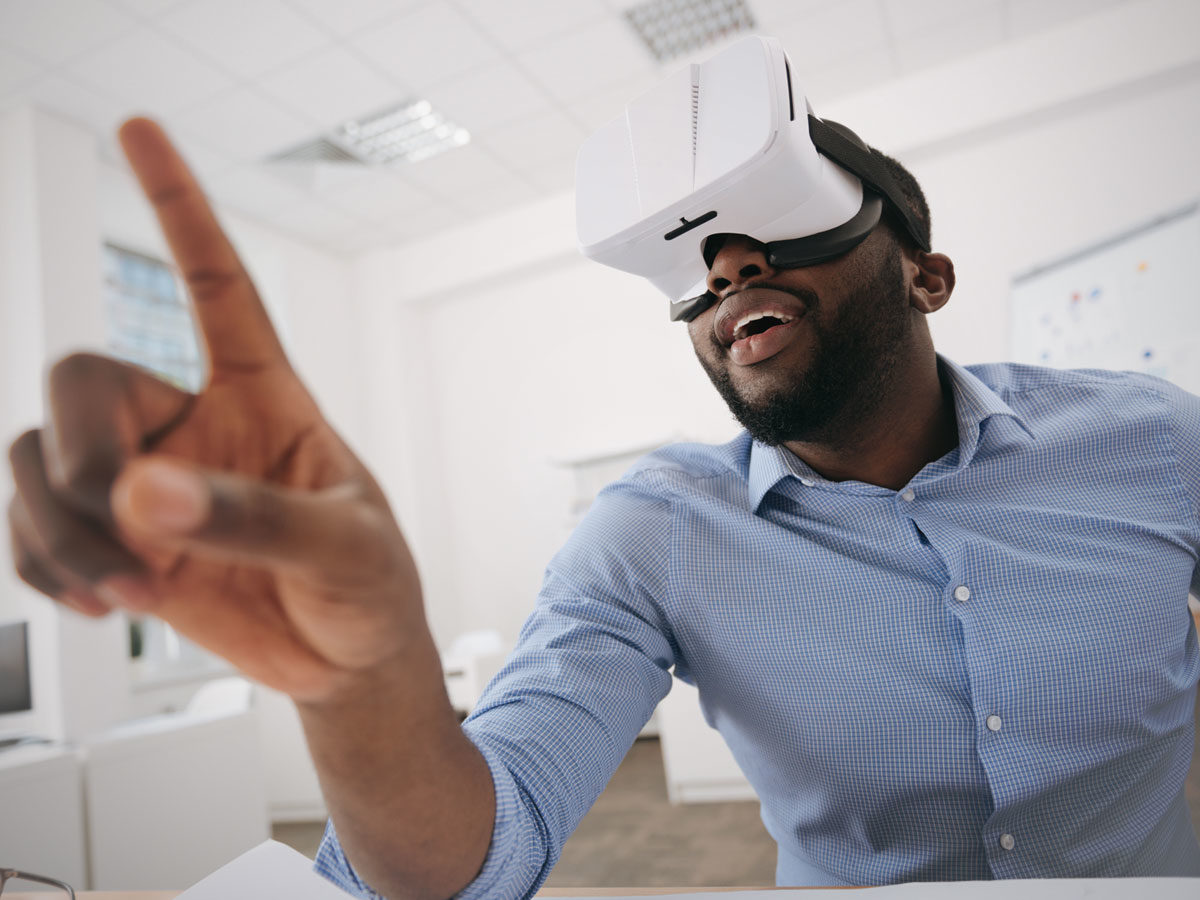

It’s been about two years since my first experience in the goggles – virtual reality goggles, that is. I was in Santa Barbara meeting with a collection of academics and researchers working to develop tools to understand the role of emotions and the non-conscious in consumer behavior. I was escorted into a room and handed the HMD (head mounted display). Immediately upon putting the goggles over my eyes, I was whisked away to a large warehouse. I looked around. “Cool. It’s so real,” I said. Suddenly, the floor fell away from me, and I was perched on a platform 100 feet high. A plank connected my platform to another platform on the opposite side of the warehouse. My heart started racing.
I heard the VR-lab operator tell me, “Dave, now walk across the plank to the other platform.” The voice snapped me into reality for a moment…or did it? Rationally, I knew I was in an office in Santa Barbara, but somehow, I could not lift my foot. I laughed anxiously.
I wanted to cross, but the steep drop below kept my feet planted. The operator offered me his hand. I said aloud, “I am in an office. I know I’m in an office.” It took me several minutes, but eventually I “crossed the pit.”
Since that day, I have been fascinated with Virtual Reality (VR) and how it can make a huge difference in the world. I have developed relationships with two of the leading VR researchers on the planet – Jim Blascovich at UC Santa Barbara and Jeremy Bailenson at Stanford. I’ve worked on projects and products with the leading developer of VR software and hardware—the same provider who sells VR products to leading academic institutions, including Harvard, Stanford, and MIT. I’ve given several employees the mission of exploring VR’s applications to market research to help our clients.
My two-year exploration has shown me that virtual reality can help us to both understand and influence behavior through immersive experiences. We can transport people to environments and situations about which we want to learn. The applications for healthcare, education, and social research are vast and inspiring: VR to help veterans overcome pain from burns and injury; VR to give students a better understanding of life in Rome circa 320 AD by letting them virtually roam the streets of the ancient city; VR to help social scientists understand human compassion. Yes, if you fly as Superman through a virtual city to save a baby, it actually makes you more likely to help someone else in the “real” world.
Of course, on that day two years ago I made connections to the world of marketing and research. VR allows us to put people in more realistic circumstances. Respondents engage immediately. Hard pressed to rationally override the stimuli, we gain greater levels of authenticity in reactions and responses.
More importantly, we can really get a compelling look at the less conscious drivers of brand choice. Next month at the TMRE (The Market Research Event), we will showcase how VR tools can help illuminate the fullness of your brand’s meaning and the strength of that meaning as it translates to in-market behavior. (If you will be there, stop by our Virtual Reality Lab. You can play in the goggles yourself and find out if you can cross the pit.)
I will continue to explore how Virtual Reality can help researchers better understand the non-conscious and emotional drivers of consumer perceptions and behavior. I’m excited because the cost barriers are coming down rapidly, just as the sophistication of the tools increases. Will Virtual Reality ever become a core part of market research? I don’t know. But can it? I think so.
—
Post Script: Thank you, Lenny Murphy for including me in your Transformation Series! Below, watch Lenny and I discuss market research innovation, transformation, social media and, yes, Virtual Reality.
You must be logged in to post a comment.
I can attest first-hand how powerful this experience is, and the extent to which it must be experienced to be believed. I remember the first time LRW exposed me to this technology and how I was initially skeptical that the simulation would feel realistic. In the specific set-up Dave describes, I was over-confident that I would be able to “walk the plank” without hesitation. My naivete immediately dissapeared and I was quickly humbled after I tried this task and immediately had a flashback to the year 2000 – the year I broke my back cliff diving in Jamaica. Alas, I couldn’t complete this simple task – and immediately realized the power of the virtual world to transcend into “real” experiences. While people have been talking about VR for years, recent technology advances and the potential to scale its use makes me excited for interesting and impactful advances that will transform education, entertainment, gaming and so much more within our lifetime.
The virual world is upon us. And you thought Matrix was Sci Fi? LRW is taking research into the new frontier. Along the way, we are discovering new ways to understand brands. Very exciting!!!
If there was ever evidence that the subconscious can trump the rational, this is it. To experience this is to believe it.